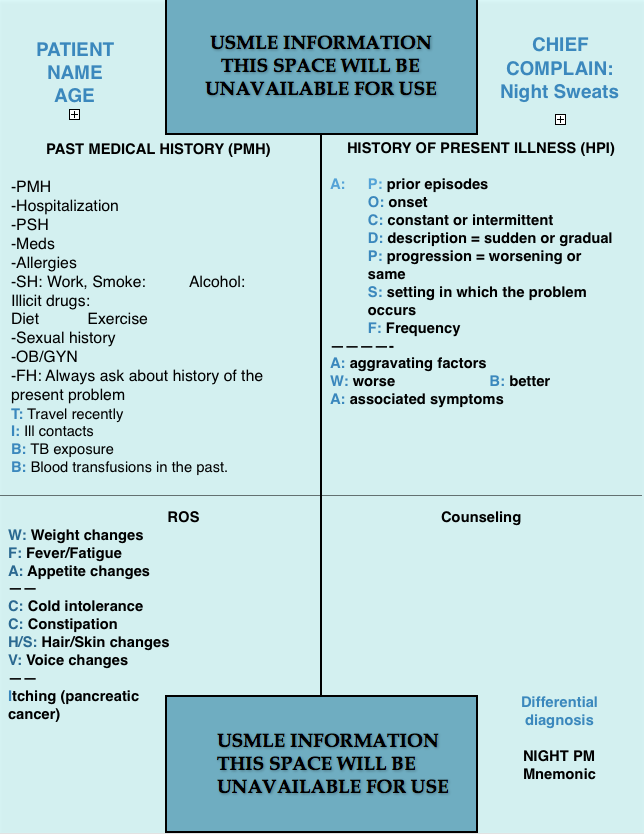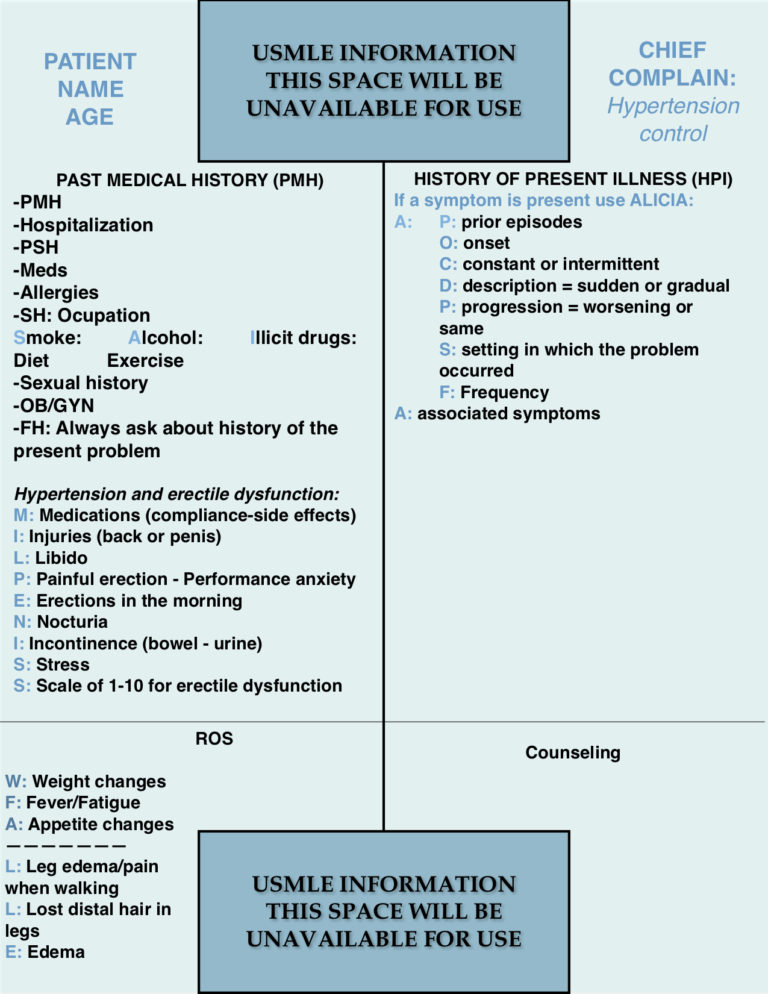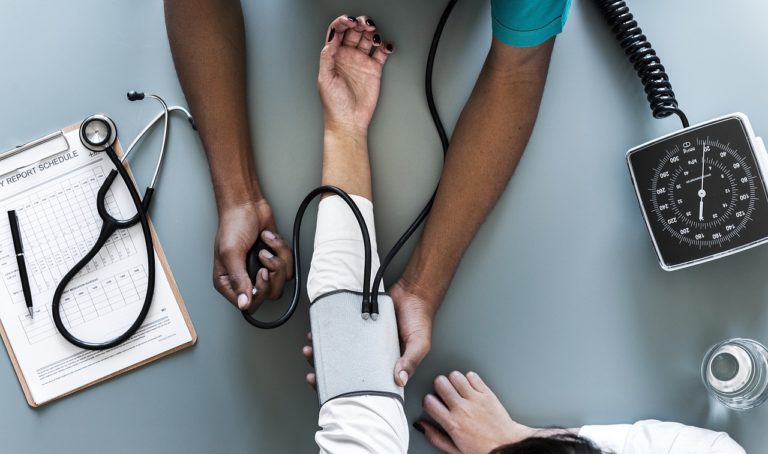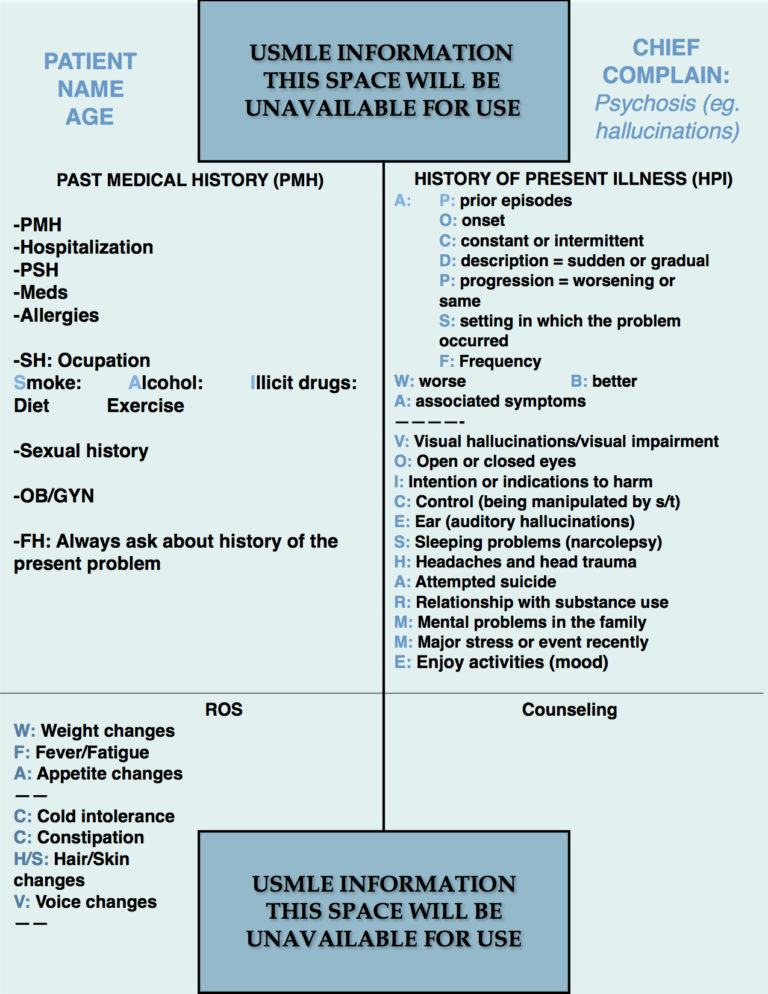Step 2 CS Blue Sheet Night Sweats Case:
These are the blue sheet, physical exam, diagnostic studies, and differential diagnosis needed for a night sweats case in the USMLE Step 2 CS exam:
In a case of night sweats, the timing is very important. For example, acute causes would be most common infectious and chronic cases would most likely be cancer or others. Think about the age of the patient and what risk factors are present such as sexual (HIV, Hepatitis B), blood transfusions (Hepatitis C before 1992), recent travel or ill contacts (immigrants from underdeveloped countries or people exposed to TB), and others.
The mnemonic “Night PM” can help us to remember the differential diagnosis for a night sweats case. This mnemonic may be applied for a case with constitutional symptoms of fever of unknown origin of chronic presentation.
MNEMONIC NIGHT PM:
“NIGHT PM”
N: Neoplasia. Think mostly in lymphomas if B symptoms are present, occult cancers and the most common cancers (lung cancer in both women and men, breast cancer in women, and prostate cancer in men. Also, think about carcinoid syndrome.
I: Infections: tuberculosis, hepatitis B or C, HIV, etc.
G: Generalized anxiety disorder, panic attack, and other psychogenic causes.
H: HIV
T: Thyroid disorder mostly hyperthyroid disease.
P: Pheochromocytoma and other endocrine disorders. If the sweating is occurring in a diabetic patient on insulin or sulfonylureas, one may think in hypoglycemic episodes.
M: Menopause.
PHYSICAL EXAMINATION
Vital signs:
Look for the blood pressure that can be elevated by thyroid disorders and pheochromocytoma.
1. HEENT:
Inspection of the head, sclerae for jaundice.
Eyes: Look for exophthalmos and lid lag when assessing EOM (Extra-ocular movement).
Mouth: Look for thrush (HIV).
Neck: Lymphadenopathy, masses, assessment of the thyroid gland for masses or enlargement.
2. Lungs:
Auscultation.
3. Heart:
Auscultation.
4. Abdomen:
Inspection.
Auscultation.
Palpation, look for masses and hepatosplenomegaly.
Percussion.
5. Extremities:
Inspection: look for decreased muscle mass.
6. Skin:
Look for jaundice (pancreatic head cancer and hepatic metastasis usually coming from colon and breast cancers).
Look for rashes (HIV).
POSSIBLE DIAGNOSTIC STUDIES:
- Pelvic, rectal, and breast exams.
- CBC.
- ESR.
- CMP.
- TSH.
- PPD/Quantiferon test.
- Blood cultures (for infections such as infective endocarditis).
- Sputum analysis with culture and sensitivity, acid-fast stain.
- Calcium (Humoral Hypercalcemia of Malignancy).
- AST, ALT, bilirubins, alkaline phosphatase.
- PT, PTT.
- Viral hepatitis serologies.
- HIV serology.
- Chest X-ray.
- CT of the abdomen, pelvis, and thorax (assessment for masses and metastasis).
- Colonoscopy.
- Mammography.
- MRCP/ERCP (Pancreatic cancer).
- Plasma and urine metanephrines.
- 5 HIIA.
The tests that can be asked here are broad and depend on the patient’s presentation. It is not necessary to order all of them in every patient. In fact, the workup should be as specific as possible to practice a cost-effective and safe assessment of the patients.
DIFFERENTIAL DIAGNOSIS:
In this case, use the mnemonic as described and that will give the most important disorders to rule out. A very good history taking is key to narrow your differential diagnosis.
We hope that this post can help you better understand how to face a night sweats case in your exam. Please, feel free to contact us should you have any comment or question by using the comments section below. Start practicing the mnemonics early for easier memorization. Good luck with your studies.
- Aortic Stenosis Severity Classification - 09/22/2020
- Carboplatin (Paraplatin) - 04/07/2019
- How to test for Vitamin D deficiency? - 09/29/2018






